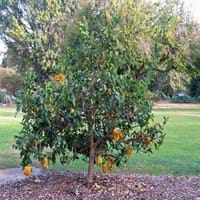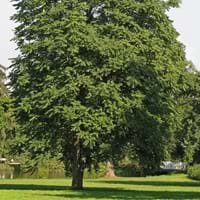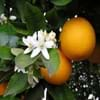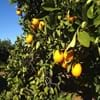Life Span
Perennial
Perennial
Origin
Southern Asia, India, Melanesia, Australia
China
Types
Not Available
Not Available
Habitat
Well Drained
Fields, Forest edges, Grassland, Roadsides
USDA Hardiness Zone
9-11
4-8
Sunset Zone
H1, H2, 8, 9, 12, 13, 14, 15, 16, 17, 18, 19, 20, 21, 22, 23, 24
Not Available
Habit
Oval or Rounded
Arching/Fountain-shaped
Flower Color
White, Purple
Yellow green, Light Green
Flower Color Modifier
Bicolor
Bicolor
Fruit Color
Yellow
Pink, Light Green, Sienna
Leaf Color in Spring
Green, Dark Green
Green
Leaf Color in Summer
Green, Dark Green
Dark Green
Leaf Color in Fall
Green, Dark Green
Dark Green
Leaf Color in Winter
Light Green
Not Available
Leaf Shape
Oval
Heart-shaped
Plant Season
Spring, Summer, Fall, Winter
Spring, Summer
Sunlight
Full Sun, Partial Sun
Full Sun, Partial Sun, Partial shade
Type of Soil
Clay, Loam, Sand
Clay, Loam, Sand
The pH of Soil
Acidic, Neutral, Alkaline
Acidic, Neutral, Alkaline
Soil Drainage
Well drained
Average
Bloom Time
Early Spring, Spring, Winter, Late Winter, Indeterminate
Spring, Late Spring, Early Summer, Summer
Tolerances
Drought
Pollution, Drought, Salt, Soil Compaction
Where to Plant?
Ground
Ground
How to Plant?
Budding, Cuttings
Seedlings
Plant Maintenance
Medium
Medium
Watering Requirements
Keep the Soil well drained, Requires watering in the growing season
Average Water Needs, Do Not over Water
In Summer
Lots of watering
Drought Tolerant, Average Water
In Spring
Moderate
Drought Tolerant, Average Water
In Winter
Average Water
Drought Tolerant, Average Water
Soil pH
Acidic, Neutral, Alkaline
Acidic, Neutral, Alkaline
Soil Type
Clay, Loam, Sand
Clay, Loam, Sand
Soil Drainage Capacity
Well drained
Average
Sun Exposure
Full Sun, Partial Sun
Full Sun, Partial Sun, Partial shade
Pruning
Prune in spring, Remove branches, Remove branches that rub together, Remove crossing or rubbing branches, Remove damaged leaves, Remove dead branches, Remove dead leaves, Remove dead or diseased plant parts
Prune in late summer or fall, Prune in late winter, Remove damaged leaves, Remove dead branches, Remove dead leaves
Fertilizers
All-Purpose Liquid Fertilizer, fertilize in spring, fertilize in summer, organic fertlizers
All-Purpose Liquid Fertilizer
Pests and Diseases
Red blotch
Red blotch, Spotted Lanterfly
Plant Tolerance
Drought
Drought, Variety of soil types
Flowers
Yes
Insignificant
Flower Petal Number
Single
Single
Fragrant Bark/Stem
Yes
Yes
Foliage Texture
Medium
Coarse
Foliage Sheen
Glossy
Matte
Attracts
Birds, Butterflies
Birds
Allergy
Asthma
allergic reaction, Skin irritation
Aesthetic Uses
Showy Purposes
Beautification, Showy Purposes
Beauty Benefits
Not Available
No Beauty Benefits
Environmental Uses
Air purification
Air purification
Medicinal Uses
Respiratory Disorders, Soothing and relieving pain
Anthelmintic, Antispasmodic, Asthma, Astringent
Part of Plant Used
Flowers, Fruits
Bark, Root
Other Uses
Making Perfumes, Traditional medicine, Used As Food, Used for its medicinal properties
Used as Ornamental plant, Used for its medicinal properties, Used for woodware
Used As Indoor Plant
Yes
No
Used As Outdoor Plant
Yes
Yes
Garden Design
Container, Edible, Feature Plant, Fruit / Fruit Tree, Hedges, Houseplant, Shade Trees, Topiary / Bonsai / Espalier, Tropical
Shade Trees, Street Trees
Botanical Name
CITRUS medica var. sarcodactylis
AILANTHUS altissima
Common Name
Buddha's Hand, Fingered Citron
Tree-of-Heaven
In Hindi
Buddha's Hand
Tree
कल्पवृक्ष
In German
Buddhas Hand
Baum
Baum des Himmels
In French
Main de Bouddha
Arbre
Arbre de paradis
In Spanish
Mano de Buda
Árbol
Arbol del Cielo
In Greek
Χέρι του Βούδα
Δέντρο
Δέντρο του Ουρανού
In Portuguese
Mão de Buda
Árvore
Árvore do céu
In Polish
Ręka Buddy
Drzewo
Drzewo Nieba
In Latin
Buddha manus
Arbor
Lignum de caelo
Phylum
Not Available
Magnoliophyta
Class
Not Available
Magnoliopsida
Order
Sapindales
Sapindales
Family
Rutaceae
Simaroubaceae
Clade
Angiosperms, Eudicots, Rosids
Angiosperms, Eudicots, Rosids
Tribe
Not Available
Not Available
Subfamily
Not Available
Not Available
Number of Species
Not Available
Not Available
Importance of Buddha's Hand and Tree-of-Heaven
Want to have the most appropriate plant for your garden? You might want to know the importance of Buddha's Hand and Tree-of-Heaven. Basically, these two plants vary in many aspects. Compare Buddha's Hand and Tree-of-Heaven as they differ in many characteristics such as their life, care, benefits, facts, etc. Every gardener must at least have the slightest clue about the plants he wants to plant in his garden. Compare their benefits, which differ in many ways like facts and uses. The medicinal use of Buddha's Hand is Respiratory Disorders and Soothing and relieving pain whereas of Tree-of-Heaven is Anthelmintic, Antispasmodic, Asthma and Astringent. Buddha's Hand has beauty benefits as follows: Not Available while Tree-of-Heaven has beauty benefits as follows: Not Available.
Compare Facts of Buddha's Hand vs Tree-of-Heaven
How to choose the best garden plant for your garden depending upon its facts? Here garden plant comparison will help you to solve this query. Compare the facts of Buddha's Hand vs Tree-of-Heaven and know which one to choose. As garden plants have benefits and other uses, allergy is also a major drawback of plants for some people. Allergic reactions of Buddha's Hand are Asthma whereas of Tree-of-Heaven have allergic reaction and Skin irritation respectively. Having a fruit bearing plant in your garden can be a plus point of your garden. Buddha's Hand has showy fruits and Tree-of-Heaven has showy fruits. Also Buddha's Hand is flowering and Tree-of-Heaven is not flowering . You can compare Buddha's Hand and Tree-of-Heaven facts and facts of other plants too.





